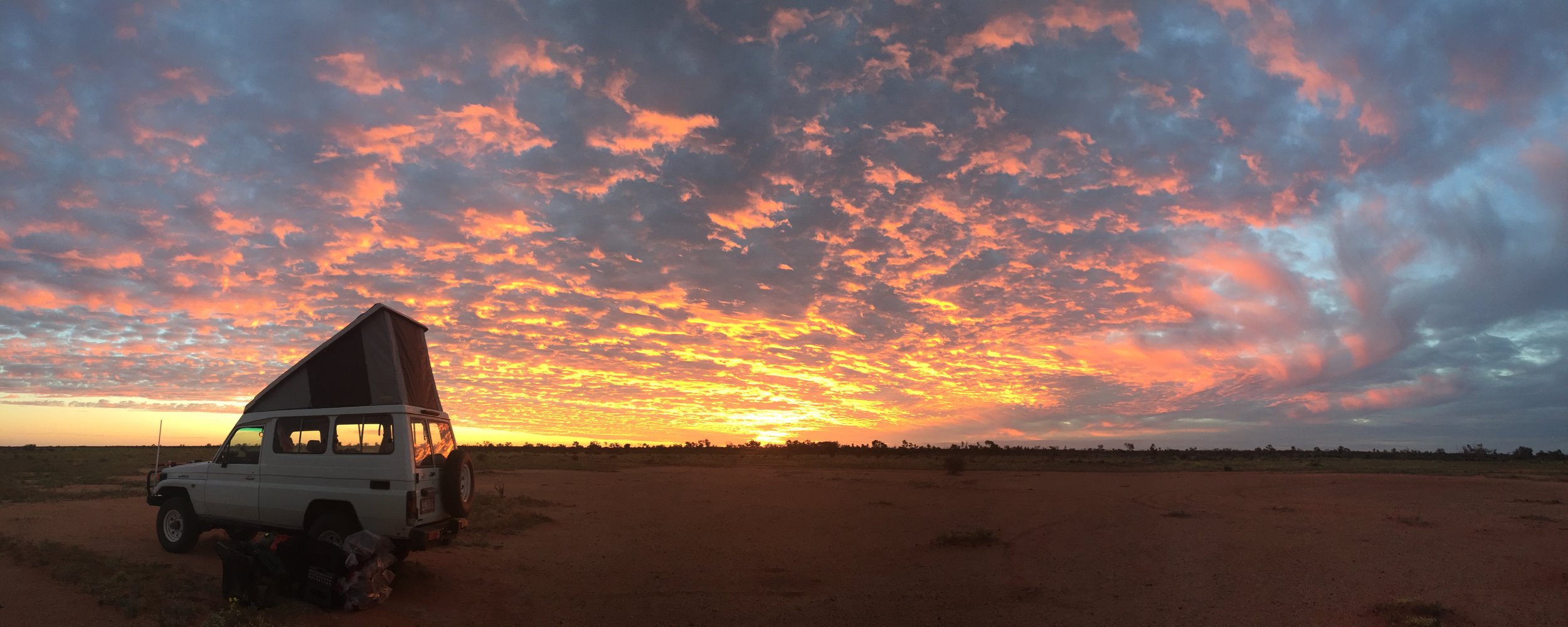Routines . . .
Routines are important when you are on the road in a strange country. They help maintain a sense of solidity, familiarity, and comfort when much of your day might be spent route-finding and driving in difficult terrain, provisioning in towns where English might be spoken little if at all, or dealing with bureaucracy-choked border crossings.
The routines don’t have to be the same ones you have at home—which is often impossible anyway—they just have to offer a grounding for the day. And the more of a habit you make of them, the more of a grounding they provide.
Lots of people start out the morning with coffee, of course: the grounding routine of all grounding routines. But how you go about it can be its own routine. My friend Graham Jackson invariably starts the pre-dawn day by collecting twigs and boiling water in one of his growing collection of volcano kettles. In fact one of my own grounding routines is simply seeing that plume of smoke rising into the still air while Graham watches with his hands clasped behind his back. Roseann and I use a volcano kettle as well, but only for our later, mid-morning coffee. At first light we’re too impatient to wait until we’re up and fully clothed to get the water going, so we put a standard kettle on the stove inside the camper while we dress. We might wind up with our coffee in hand a bit sooner than Graham, but I suspect his is more satisfying.
Graham also starts the day with rusks to be dipped in his coffee—a routine that must be particularly comforting given his upbringing in South Africa. We like them too, when we can find them in a bakery, as we did these superb versions in a coffee shop in Windhoek.
We generally skip breakfast, but make up for it with another regular treat: bacon and egg sandwiches at a mid-morning halt, either prepared then (while boiling water for coffee in the volcano kettle), or fixed ahead of time, wrapped in aluminum foil, and then re-warmed on the engine block when we stop. On the Troopy we carry the gas (propane) bottle on a swing-away on the Kaymar rear bumper, and we have a burner that screws directly to the bottle, so setting it up to use a frying pan is quick; we leave it right on the mount. A Front Runner drop-down table on the Land Cruiser’s rear door serves perfectly as a prep station.
The protein-rich sandwich provides plenty of fuel for the mid-day driving and navigating tasks, augmented by a late, light lunch, which carries us through the afternoon to camp, and another shared routine. Roseann immediately breaks out her journal to record our mileage, location, and the day’s events, then does a sketch or quick field painting of some notable event. Graham, meanwhile, fills in his with much the same notes, but goes on to record numerous details about the vehicle to which he can refer in minute detail later. Want to know what kind of fuel economy we each got between Alice Springs and Birdsville when we crossed the Simpson Desert via the Madigan line? Graham can tell you down to the tenth of a liter.
Meanwhile I will be off snapping photos, which always seems like the lazy approach to recording when contrasted to Roseann and Graham’s diligence. By now, Connie has usually concocted some impossibly ornate tray of canapés with which we can enjoy possibly the best routine of all: sundowners.
I was introduced to the concept of cocktails-at-sundown on my first African safari, when a guide magically concocted iced G&Ts out of a canvas bar in the back of a Land Rover, and we watched a herd of 200 cape buffalo grazing in the last golden light over a plain in Zambia. Since I have tried to watch the sun set every day I can since I was a child, adding alcohol came as a natural why-didn’t-I-think-of-that revelation, and we now adhere to the tradition whenever possible while on the road.
Sundowners would make a good note to end this on, but I have one more routine to which I adhere whenever the sky is clear: Once it is fully dark, I check the sky for celestial sights. I confirm the appearance of favorite constellations depending on season and location: Orion, Scorpius, the Southern Cross and its two pointers. With binoculars I check planets: If Jupiter is visible I can follow the linear dance of its four Galilean moons from night to night; if Saturn is up and on a closer approach to Earth I can make out the rings giving it an apparent oblong shape. (This was the best view Galileo himself ever got with his primitive telescopes, and he went to his grave thinking Saturn was an oblong planet.)
At the end of a day, what could ground one better than the assurance that the universe is still proceeding comfortingly along its majestic course, no matter what continent one is on?






